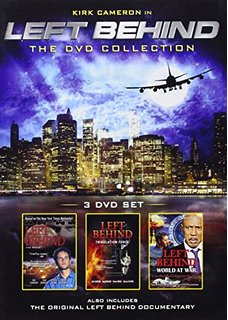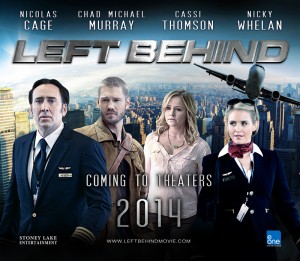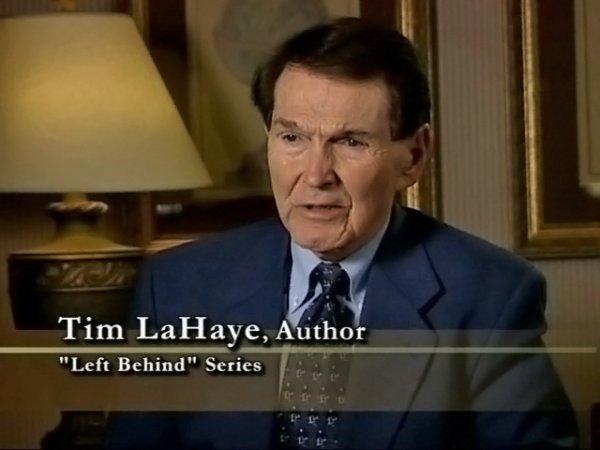 The problem with sports being a metaphor for life is not that the claim is inaccurate: sports truly is a metaphor for life. The problem is the terrain of what constitutes a metaphor for life is a vast landscape. Within sports, virtually everything can and is described as being a metaphor for life.
The problem with sports being a metaphor for life is not that the claim is inaccurate: sports truly is a metaphor for life. The problem is the terrain of what constitutes a metaphor for life is a vast landscape. Within sports, virtually everything can and is described as being a metaphor for life.
When it comes to comparing values and ideals taken from sports and applied cinematically to life, I have a fondness for golf and high school and college football movies. While I don’t play golf (at least not yet) I did play a bit of high school football some many decades ago.
There’s strong evidence that sport strongly reinforces certain personal characteristics such as responsibility, courage, teamwork, mental focus, persistence, humility, commitment and self-discipline.
While there are all kinds of things that can rightly divide secular moviemaking from films made by Christian genre movie producers, high school football is the game field they both play, often scoring box office touchdowns on. Perhaps in no small part because Friday night high school football is in some ways best thought of as a secular religion south of the Mason Dixon Line. High school football teams usually play between eight and 10 games in a season, starting after Labor Day. If teams have successful league seasons, they advance to regional or state playoff tournaments. Some schools in Texas play as many as 15 games if they advance to the state championship game. Most high school teams play in a regional league, although some travel 50 to 100 miles to play opponents.
Among my favourite golf movies are Tin Cup from 1996, starring Kevin Costner and Rene Russo; The Legend of Bagger Vance, with Will Smith, Matt Damon and Charlize Theron, released in 2000; and Seven Days in Utopia, released in 2011, starring Robert Duvall and Lucas Black, based on the book Golf’s Sacred Journey: Seven Days at the Links of Utopia by Dr. David Lamar Cook, a psychologist who lives in the Hill Country of Texas, where the book and movie are set.
As for American high school football movies, Ranker, the social consumer web platform launched in August 2009, designed around collaborative linked datasets, individual list-making and voting, which attracts 20 million unique visitors per month, in fact, has a category simply called “The Best High School Football Movies.”
Ranked number one is Friday Night Lights the 2004 film directed by Peter Berg, which documents the coach and players of the 1988 season Permian High School Panthers football team in Odessa, Texas and their run for the state championship, based on the 1990 book, Friday Night Lights: A Town, a Team, and a Dream by H. G. Bissinger. The film won the Best Sports Movie ESPY Award.
Number two on Ranker’s list is Remember the Titans, made in 2000, and based on the true story of African-American coach Herman Boone, portrayed by Denzel Washington as he tries to introduce a racially diverse team at recently but voluntarily integrated T. C. Williams High School in Alexandria, Virginia in 1971. It was produced by Jerry Bruckheimer.
In 2006, Alex and Stephen Kendrick, who are both associate pastors on the staff of Sherwood Baptist Church in Albany, made Facing the Giants, their second Sherwood Pictures movie, about high school football and resilient faith. While the movie is admired and often still shown 11 years after it was made at Christian church movie nights, secular cinema critics have been less effusive in their praise. Still, two scenes stand out for me, and are widely available on YouTube. The first is lineman and Shiloh Eagles team captain Brock Kelley’s 100-plus yard blindfolded “Death Crawl” (https://www.youtube.com/watch?v=-sUKoKQlEC4) with his 160-pound teammate Jeremy Johnson on his back, and soccer kicker turned placekicker David Childers’ 51-yard game-winning field goal in the Eagle’s 24-23 victory over the Richmond Giants (https://www.youtube.com/watch?v=4uCj5_a3nbw).
When the Game Stands Tall was released in 2014. It stars Jim Caviezel, best known for portraying Jesus in Mel Gibson’s blockbuster 2004 film The Passion of the Christ, here playing Catholic De La Salle High School Spartans’ football coach Bob Ladouceur (with Laura Dern as his wife, Bev Ladouceur), and telling the story of what comes after the record-setting 151-game 1992–2003 winning streak by De La Salle, a Catholic boys’ high school in Concord, California, just east of San Francisco. The movie is an adaptation of the 2003 book of the same name by Neil Hayes, then a columnist with the Contra Costa Times. The movie was filmed in Louisiana.
Released a year later in 2015 is Woodlawn is also a true story and in some ways a faith-based version of Remember the Titans, although Woodlawn is set slightly later (two years) and is situated in at Woodlawn High School in Birmingham, Alabama in 1973, a decade after Birmingham had Bull Connor as commissioner of public safety in 1961 when the civil rights “Freedom Riders” bused to the South, and where on Sept. 15, 1963 a bomb exploded before Sunday morning services at the 16th Street Baptist Church, with a predominantly black congregation that served as a meeting place for civil rights leaders. Four young girls were killed and many other people injured.
Woodlawn opens with a prologue set three years earlier on Sept. 12, 1970 where legendary University of Alabama football coach Paul “Bear” Bryant, the Crimson Tide’s iconic fedora-wearing legend, well played by Jon Voight, tries to ease tensions by inviting John McKay and his University of Southern California (USC) Trojans team to play at Legion Field in Birmingham, marking the first time a fully integrated team had come to play Alabama in the South. The Crimson Tide had one black player at the time. The game was a 42-21 Trojans rout.
Cut to three years later, when Woodlawn High School becomes integrated, with football coach Tandy Gerelds, played by Nic Bishop, welcoming the arrival of such talented black players as Tony Nathan, played by Caleb Castille.
Hank Erwin, played by Sean Astin, just sort of shows up at Woodlawn High School, introducing himself as a “sports chaplain” and asking to address the team. Tandy Gerelds reluctantly agrees. In his impassioned speech Hank asks the players to “choose Jesus” and, much to the coach’s amazement, most of the players agree, including Tony Nathan, who would go onto become a tailback for Alabama and later the Miami Dolphins. Erwin’s sons, Birmingham brothers Jon and Andrew Erwin, directed Woodlawn.
To understand the somewhat enigmatic self-proclaimed sports chaplain Hank Erwin, it is helpful to know something of the “Jesus movement,” which began on the west coast of the United States in the late 1960s and early 1970s, spreading primarily throughout North America, Europe, and Central America. Members of the movement were often called “Jesus people,” or “Jesus freaks.”
Its predecessor, the charismatic movement, had already been in full swing for about a decade. It involved mainline Protestants and Roman Catholics who testified to supernatural experiences similar to those recorded in the Acts of the Apostles, especially speaking in tongues. Both these movements were calling the church back to what they called early Christianity and recovery of the gifts of the Spirit.
TIME magazine had a 1966 cover asking “Is God Dead?” They had another cover story in 1971 on “The Jesus Revolution.” And just one year later, in June 1972, more than 80,000 high school and college students gathered in the Cotton Bowl Stadium in Dallas for Explo ’72, organized by Campus Crusade for Christ (now known as Cru) to celebrate the person of Christ and mobilize youth to take the Good News to friends and family when they returned to their hometowns. Bill Bright, founder of Campus Crusade for Christ, led the initiative and Billy Graham, now 98, and the most important Christian crusade and revival evangelist of the latter half of the 2oth century, preached at it. And Hank Erwin was there for it.
The dramatic tension on and off the field is elevated by events such as Nathan refusing to shake Alabama governor George Wallace’s hand during an awards dinner, citing Wallace’s opposition to school integration, and Tandy getting in trouble with the local school board because of the team’s religious activities, including Hank Erwin getting the microphone plug pulled while delivering the Lord’s Prayer before the history-making 1973 game that attracted 42,000 spectators (another 20,000 were turned away), only to have the thousands of spectators spontaneously recite it for him.
Peter J. Leithart, a teaching elder in the Presbyterian Church in America, who lives in Birmingham, Alabama, and is president of the Theopolis Institute, wrote in a review in September 2015, after an advance screening of the film in Birmingham, in the Catholic journal First Things that “the acting is good, especially Jon Voight as Bear Bryant, Nic Bishop as Woodlawn’s coach, Tandy Gerelds, and Caleb Castille who plays Nathan in his first film. Technically, evangelical films have come a long way.”
Caleb Castille was originally hired as a stunt double for the British actor who was picked to play Tony Nathan, but visa complications left the Erwins scrambling to find a last-minute replacement. Only then did they discover Caleb’s audition tape.
Caleb Castille won two national championship rings with the University of Alabama before he sensed God was calling him out of football to pursue an acting career instead. His father, Jeremiah Castille, played with Tony Nathan on the 1979 Alabama Crimson Tide national championship team.
Still, Leithart was left dissatisfied by Woodlawn. “I think there are a number of reasons for that dissatisfaction, but at base the problem is theological (ain’t it always).
“Evangelicalism is a word religion. I’m a big fan of words, but even talking pictures aren’t fundamentally about words. It’s no accident that the hall of fame for directors has a large share of Catholics (Fellini, Hitchcock, Scorsese), Orthodox (Tarkovsky, Eisenstein), and sacramental Protestants (Bergman, Malick). This can’t be the whole story, of course, since aniconic Judaism has produced some of the world’s great filmmakers. But there’s something to it: Evangelical films over-explain, over-talk. They don’t trust the images to do the work.
“I suspect a more sacramentally oriented evangelicalism, an evangelicalism more attuned to types and symbols in scripture, would make better films.
“Evangelicalism is also a conversionist faith. The key crisis of life is the moment of commitment to Christ. In Woodlawn, most of the characters convert early in the film, necessarily so because the story is about the effect of the revival on race relations. But that means that the line of character development is flat. The really crucial character development has taken place in the moment of conversion. The main exception is Coach Gerelds, and not surprisingly, it’s Coach Gerelds who ends up being the dramatic focus of the film, the character whose emotions and motivations we get to know best.
“Theologically speaking, character development is ‘sanctification.’ A conversionist form of Christianity places less emphasis on sanctification than on conversion and justification. In films, that translates into drastic oversimplification of human psychology. For evangelicals, there are only two sets of motivations, as there are two kinds of people: Saved and unsaved. While that is ultimately true, it is not the whole story.”
Woodlawn, distributed by Pure Flix Entertainment, owned by David. A.R. White, raised in a small Mennonite farming town outside of Dodge City, Kansas, brothers Kevin and Bobby Downes, and Michael Scott, did impressively better perhaps with the very secular Rotten Tomatoes, which is by no means always kind to either evangelical or high school football films, and is the leading online aggregator of movie reviews from a mix of professional critics and its community of users, with an overall score of 77 per cent, and an audience score of 82 per cent (earning a “full popcorn bucket”) meaning the movie received 3.5 stars or higher by Flixster and Rotten Tomatoes users. Rotten Tomatoes noted under “Critics consensus: No consensus yet.” Rotten Tomatoes is part of Fandango’s portfolio of digital properties.
Next up for me perhaps is the college football movie from 2006, We are Marshall, which depicts the aftermath of the Nov. 14, 1970 airplane crash that killed 37 football players on the Huntington, West Virginia Marshall University Thundering Herd, along with five coaches, two athletic trainers, the athletic director, 25 boosters, and a crew of five. New coach Jack Lengye, played by Matthew McConaughey, arrives on the scene four months later in March 1971, determined to rebuild Marshall’s Thundering Herd and heal a grieving community in the process (https://www.youtube.com/watch?v=YU4QBR-V79I).
You can also follow me on Twitter at: https://twitter.com/jwbarker22
















